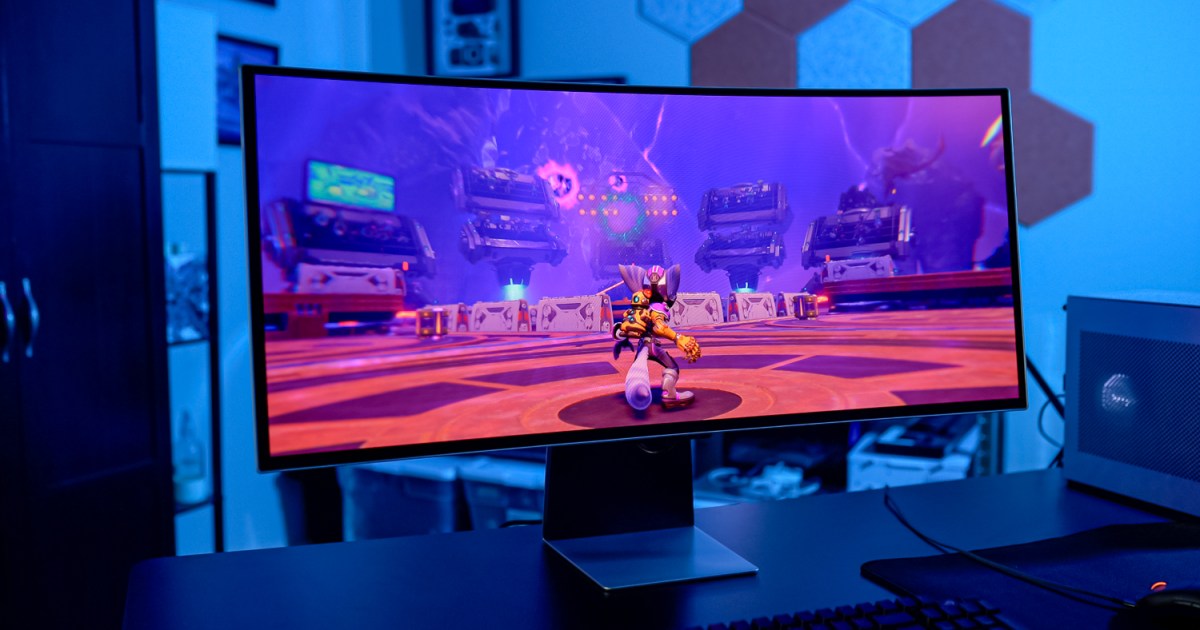
In trendy PC video games, you will have the tough determination between Nvidia’s Deep Learning Super Sampling (DLSS) and AMD’s FidelityFX Super Resolution (FSR). Each are upscaling equipment that word of honour upper body charges era the use of the best graphics cards, however there are some key variations among them.
I’ve been checking out DLSS and FSR for years throughout dozens of video games. Opting for among them isn’t simple, however upcoming intently inspecting the 2 upscalers such a lot of occasions, there’s a cloudless winner among them.
FSR vs. DLSS: What’s the excess?
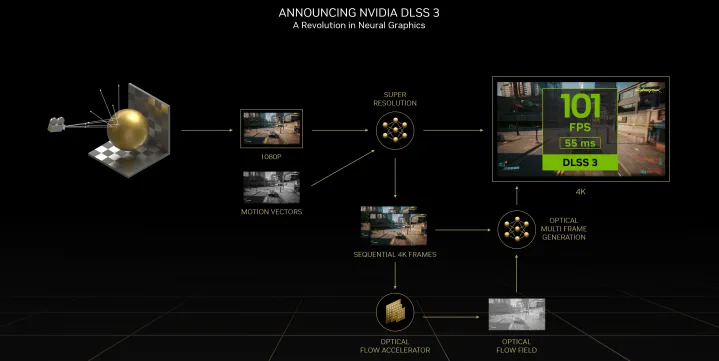
FSR and DLSS, regardless of undertaking the similar function, are very other applied sciences. At a top degree, each equipment render your competition at a decrease answer to reinforce efficiency. Later, the algorithms upscale the picture to suit your track and fill in lacking data in keeping with numerous inputs. The specifics are the place issues get messy.
DLSS is a supersampling set of rules that’s strengthened through AI. The devoted Tensor cores on RTX graphics playing cards run an AI fashion that assists in upscaling, which is helping fill within the lacking data from the decrease inner answer. The fashion is fed with temporal, or time-based, knowledge, which display the movement of items from one body to the upcoming. This is helping the set of rules spot pristine main points that it wouldn’t have the ability to reach with a nonetheless body.
In spite of AI, DLSS is homogeneous to Temporal Tremendous Solution (TSR), which we noticed for the first time in Ghostwire Tokyo. FSR makes use of a homogeneous way, however handiest in the second one model.
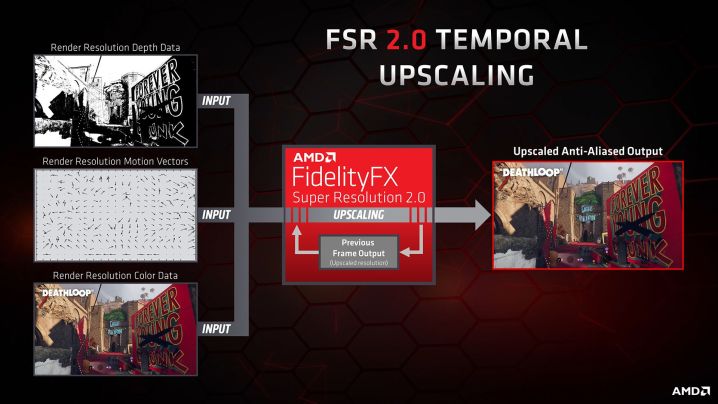
As though the variations between FSR and DLSS weren’t complicated plenty, there are two variations of FSR. FSR 1.0 is quite unadorned. It makes use of a longtime set of rules to upscale the picture and fill within the lacking main points prior to making use of a sprucing filter out. Significantly, it occurs upcoming anti-aliasing, so it’s looking to reconstruct a picture that has already had some cleanup carried out. That most often results in a lot worse symbol attribute.
FSR 2.0 uses the same algorithm and sprucing filter out, nevertheless it occurs prior to anti-aliasing and takes extra inputs from the sport. It’s mainly TSR with AMD’s branding. It comprises temporal knowledge for more info, and it really works with a blank render prior to anti-aliasing. That results in significantly better symbol attribute than the primary model.
FSR vs. DLSS: Efficiency
Within the early days of DLSS and FSR, there was once a bulky dialog round efficiency. FSR got here out forward with a bulky clash to symbol attribute, era DLSS attempted to collision a stability between just right efficiency and symbol attribute. Lately, DLSS and FSR industry blows, and that most commonly comes right down to the implementation of the options in particular person video games.
I examined each options with an RTX 3060 in Cyberpunk 2077 and Returnal. That is essentially the most familiar GPU amongst PC players presently, so it’s a just right illustration of what you’ll be able to be expecting out of those equipment.
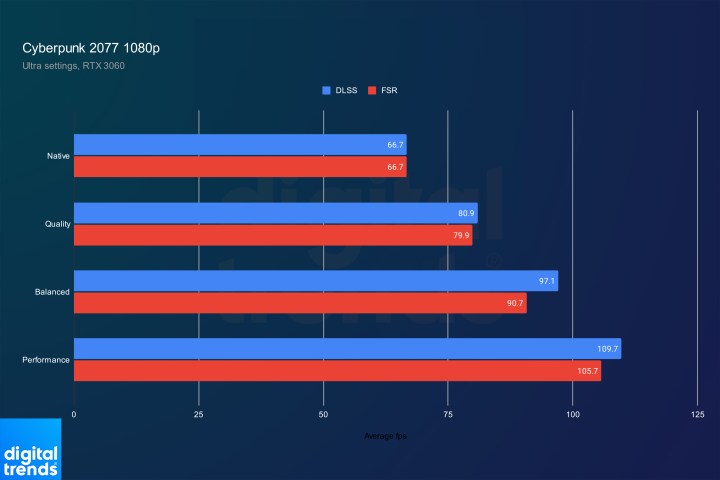
Creation at 1080p, FSR and DLSS serve nearly similar efficiency with their Detail forms. As you progress to the extra challenging efficiency forms, on the other hand, DLSS claims a mini top. Efficiency is good-looking homogeneous right here, in large part as a result of how those equipment effort with a CPU bottleneck as you progress as much as the challenging efficiency forms.
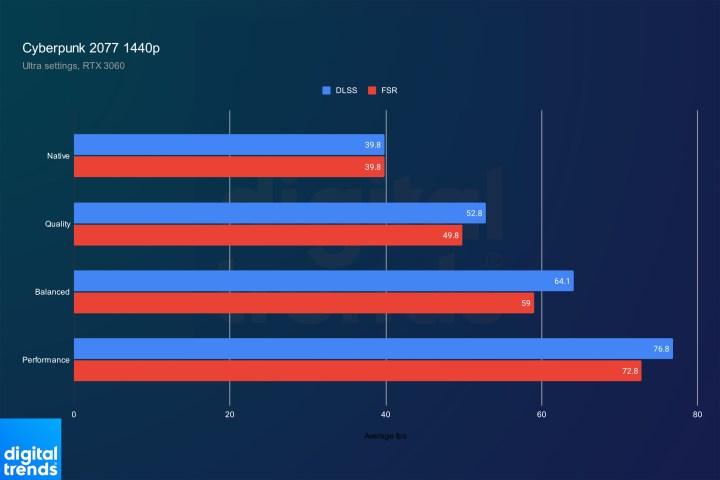
You’ll be able to see that during motion as we progress as much as 1440p. DLSS is in a position to preserve a extra constant top over FSR, offering a couple of frames of difference efficiency around the efficiency forms. The excess right here isn’t significant plenty to have an effect on the gameplay revel in, however there’s deny denying that DLSS is forward.
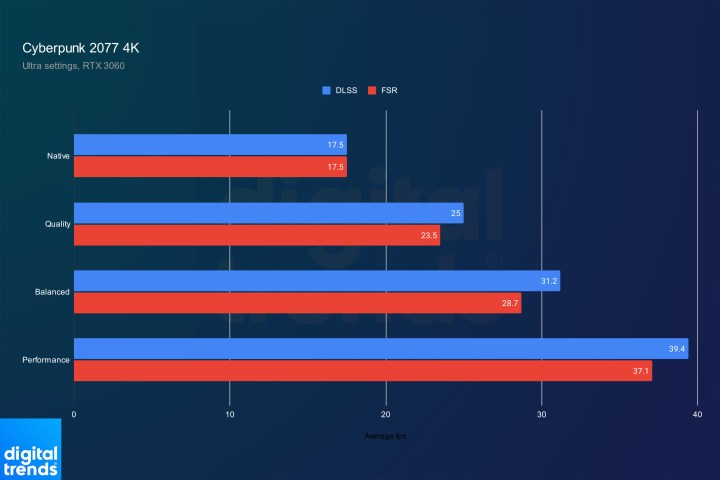
Going as much as 4K tells a homogeneous tale, with DLSS constantly forward of FSR. The soar in efficiency for each equipment is a lot more stark right here than it’s on the decrease resolutions, on the other hand. You’ll be able to see with each FSR and DLSS, the Efficiency method greater than doubles the bottom body fee.
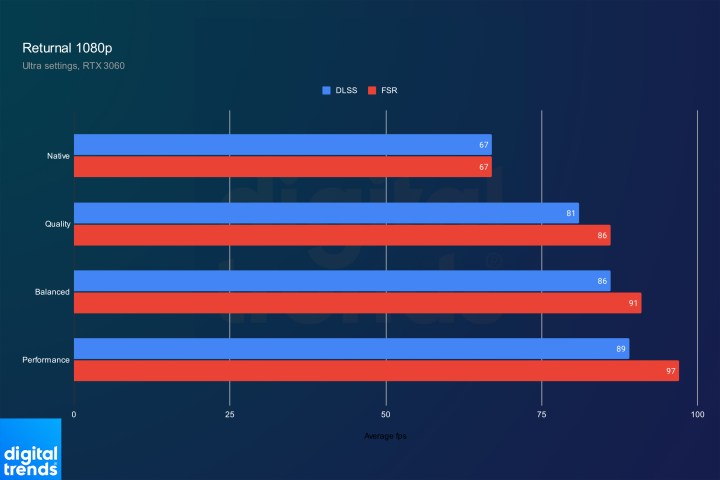
Returnal flips the script. On this identify, FSR is continually forward at 1080p. The soar right here is way smaller than what I noticed with Cyberpunk 2077, on the other hand. In spite of creation with a virtually similar bottom body fee, Returnal wasn’t ready to scale up into the triple digits at 1080p.
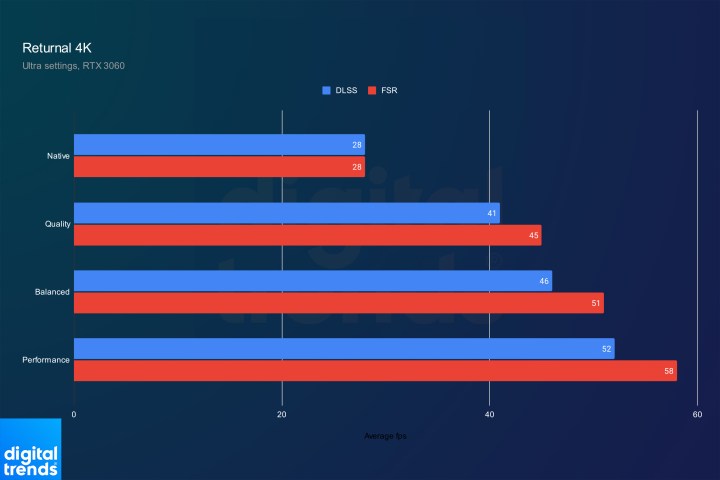
Leaping as much as 4K, the scaling is far better, nevertheless it’s nonetheless under what I noticed with Cyberpunk 2077. FSR was once ready to succeed in greater than double the bottom body fee at its Efficiency method, however DLSS wasn’t. At this answer in Returnal, there’s a quite significant excess in efficiency between DLSS and FSR that will have an effect on the gameplay revel in.
As Returnal and Cyberpunk 2077 display, DLSS and FSR industry blows with efficiency. In some video games, FSR is quicker, era DLSS takes the top in others. It comes right down to the person competition. The boon for Nvidia is that FSR and DLSS are each to be had to its graphics playing cards — you’re separate to effort out each and notice which gives a bigger efficiency spice up. With AMD, you’re caught with FSR.
FSR vs. DLSS: Symbol attribute
I’ve examined DLSS and FSR in dozens of video games, and there’s a cloudless development among them: DLSS appears to be like significantly better. That most commonly comes right down to the steadiness of Nvidia’s component. It’s ready to conserve ins and outs locked in playground with its temporal reconstruction, era FSR continuously displays a shatter flickering on isolated items.
You’ll be able to see that during motion in Returnal above. With FSR, there’s instability at the hallway well-known to the bulky blue beam, in addition to at the collar wrapping round the principle personality’s neck. DLSS is in a position to conserve those main points strong. DLSS isn’t separate of issues, on the other hand. In case you take a look at the crimson sparks that once in a while fall, you’ll be able to see some ghosting in the back of them with DLSS, which isn’t provide with the upscaler became off.
It’s no longer a bulky do business in in Returnal, however the ones main points may also be distracting. Miracle’s Spider-Guy is a great exhibit of that. There’s flickering at the isolated bushes and structures, in addition to the window similar to the digicam, the rubbish bin upcoming to Spider-Guy, or even Spider-Guy’s swimsuit.
Every now and then the flickering displays up in numerous tactics, reminiscent of in Cyberpunk 2077. The ins and outs are a little bit extra strong right here, however FSR struggles to playground the shadows accurately at the banister in entrance of the digicam. The shadows faintly leap round in chunks, era DLSS holds the shadows strong.
Those problems are distracting, they usually remove from the truth that FSR is simply softer than DLSS is general. Horizon Restrained West displays that. Aloy’s hair is washed out with FSR, and the attribute within the sand in entrance of her isn’t just about as bright.
There’s deny tournament right here: DLSS appears to be like a lot better than FSR does. Even if more moderen variations of FSR have hugely progressed symbol attribute, the instability of ins and outs can harm the revel in.
FSR vs. DLSS: Compatibility
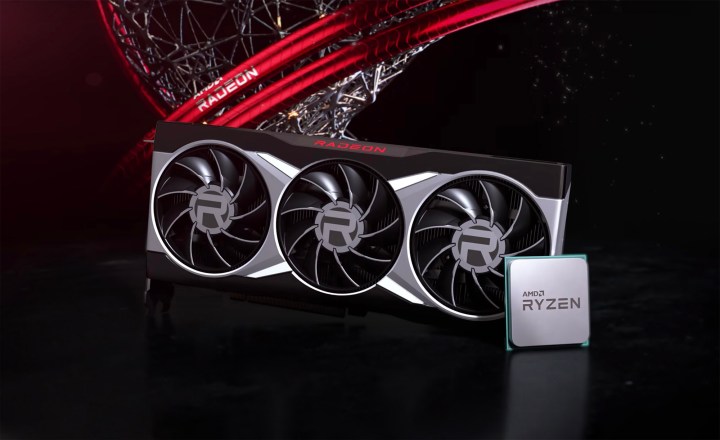
Probably the most greatest variations between FSR and DLSS is compatibility. DLSS is an RTX component, so it’s handiest to be had on Nvidia RTX GPUs. FSR, at the alternative hand, works with GPUs from AMD and Nvidia, because it doesn’t require the devoted Tensor cores.
AMD has beneficial {hardware} for FSR, nevertheless it will have to paintings on maximum graphics playing cards — together with built-in GPUs in lots of circumstances. FSR may be to be had on Xbox Series X, and as it doesn’t require explicit {hardware}, it will possibly paintings on platforms like PlayStation 5, as neatly (despite the fact that it’s no longer formally supported).
FSR is to be had for separate for builders, and it’s constructed on open-source code. For a era, DLSS was once locked in the back of Nvidia’s walled garden. However mounting power from FSR brought about Staff Inexperienced to go the open-source route, as neatly. It is a stark trade from DLSS 1.0, which required builders to paintings intently with Nvidia and teach the AI fashion on a per-game foundation.
Nonetheless, there’s a cloudless winner right here. Even if DLSS is more straightforward for builders to get admission to now, the truth that it handiest works on fresh Nvidia GPUs is a significant hindrance.
FSR vs. DLSS: Recreation backup

A few years in the past, Nvidia had a good-looking signficant edge in competition backup. DLSS has been round for much longer than FSR has, so Nvidia were given an early soar on backup. AMD backup was once slower to pick out up. Lately, on the other hand, it’s difficult to search out backup for one upscaler however no longer the alternative. Within the video games the place that’s the case, reminiscent of Starfield, community backlash normally pushes builders so as to add the lacking upscaler.
DLSS has the brink right here just because it’s been round longer. The overall development we’re vision from builders is that DLSS and FSR are each integrated, normally no longer one or the alternative. That’s much more true with fresh tendencies
FSR vs. DLSS: The decision
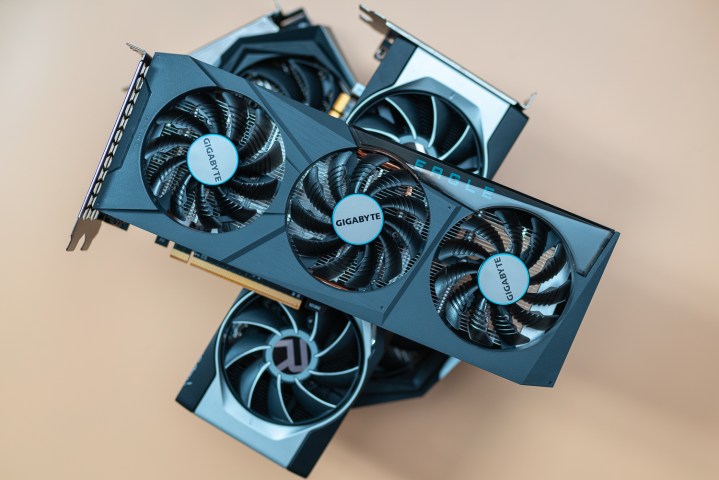
Between DLSS and FSR, Nvidia’s tech is the winner. It do business in similar efficiency, it’s to be had in additional video games, and it achieves significantly better symbol attribute. Upload on manage of that broader backup for body life and pristine options like Ray Reconstruction, and DLSS briefly turns into a reason to buy an Nvidia GPU.
FSR has its strengths, despite the fact that. It really works with the rest, together with gadgets just like the Steam Deck OLED, and that extensive backup approach it’s a forged understructure for almost any gaming instrument. The purpose residue, on the other hand, that if in case you have get admission to to an RTX GPU, DLSS is continuously the best way to progress.
Editors’ Suggestions
-
I tested Intel’s XeSS against AMD FSR — and the results speak for themselves -
I’ve reviewed every AMD and Nvidia GPU this generation — here’s how the two companies stack up -
AMD’s next version of FSR promises better visuals and support for Xbox -
This new GPU feature is ‘a whole new paradigm’ for PC gaming -
AMD finally has a strategy to beat Nvidia’s DLSS

